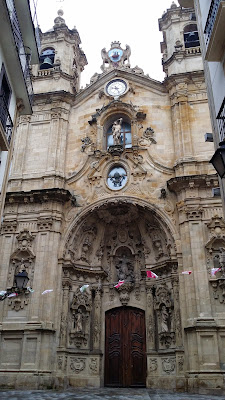 |
| Our room was on the second floor near the corner |
 |
| View from our hostel window over Plaza Gipuzkoa |
 |
| David indulging |
 |
| San Sebastian Harbour |
 |
| House at Harbour |
 |
| Kayaker and Santa Clara Island |
 |
| La Concha beach |
 |
| British Cannon |
 |
| The Church of Santa Maria |
 |
| The Cathedral of the Good Shepherd |
 |
| Flowering Magnolias |
 |
| The Korrika - note child beside buggy proudly holding aloft the wooden baton adorned with the Ikurrina |


No comments:
Post a Comment